Now, having handled the acquisition (and even some spending of) resources during the game you should be set up for success. While efficiency is mainly about your own actions and how that sets you up for the future, strategy is the long-term decisions that goes into spending those resources. Think of efficiency as preparing well for the journey, strategy is about having a destination. Now, obviously your destination should be ‘winning the game’ but you can try to achieve that in many different ways. The question is thus:
How will you win the game?
When you answer this question you answer the most important strategic question in the match. You can play without a strategy at all, simply on the basis of efficiency gather resources and make the tactically soundest decision in a given round to try to snatch some points, or deny your opponent points. This is your baseline-plan, but having an overall strategy increases your success-rate further and helps guide you short-term decision-making. Having a strategy then is about having a focus, a goal to achieve. It helps you determine when to switch from passive to aggressive, or where to spend your limited resources to achieve the greatest increase in win-percentage.

There is a term players use to refer to this sometimes. It is called ‘playing to your outs’, outs in this case are the actions that let you ‘out’ of the game on your preferred terms. If you have no outs that is the same as that you have no winning strategy. In this case you can either revert to fundamentals and hoping that your opponent makes a mistake, or perhaps it is time to take a high-risk gamble?
Let’s look at some examples.
Example 1 – Playing Runner versus Hard-Hitting News
As a new player, this in one of those situations where you need a strategy or you most assuredly will lose. Decks that play HHN want to cover you in tags, and the moment they do the win-percentage usually swings greatly in their favor.
The common fundamental strategy is to play around this by only running when you can afford to clear all 4 tags the next turn. The more money you have in the bank, the better. The reason is twofold, more money means it costs the corp more to tag you. Also, if you have 8 or more credits you can clear four tags the following round.
If your deck allows it you might instead fetch a solution from it such as Misdirection or On The Lam. In that case your strategy might be to dig for this card while accomplishing side-objectives.
Selecting Initial Strategy
The first thing that you need to do in a match is to choose a strategy. What then determines which path to choose? Obviously you have brought a deck with some specific strengths and weaknesses and if possible you want to play to your strengths, whether that be economy denial, scoring out quickly or having a strong late-game. Maybe it is even finding the combo pieces you need to win on the power of a specific combo alone.
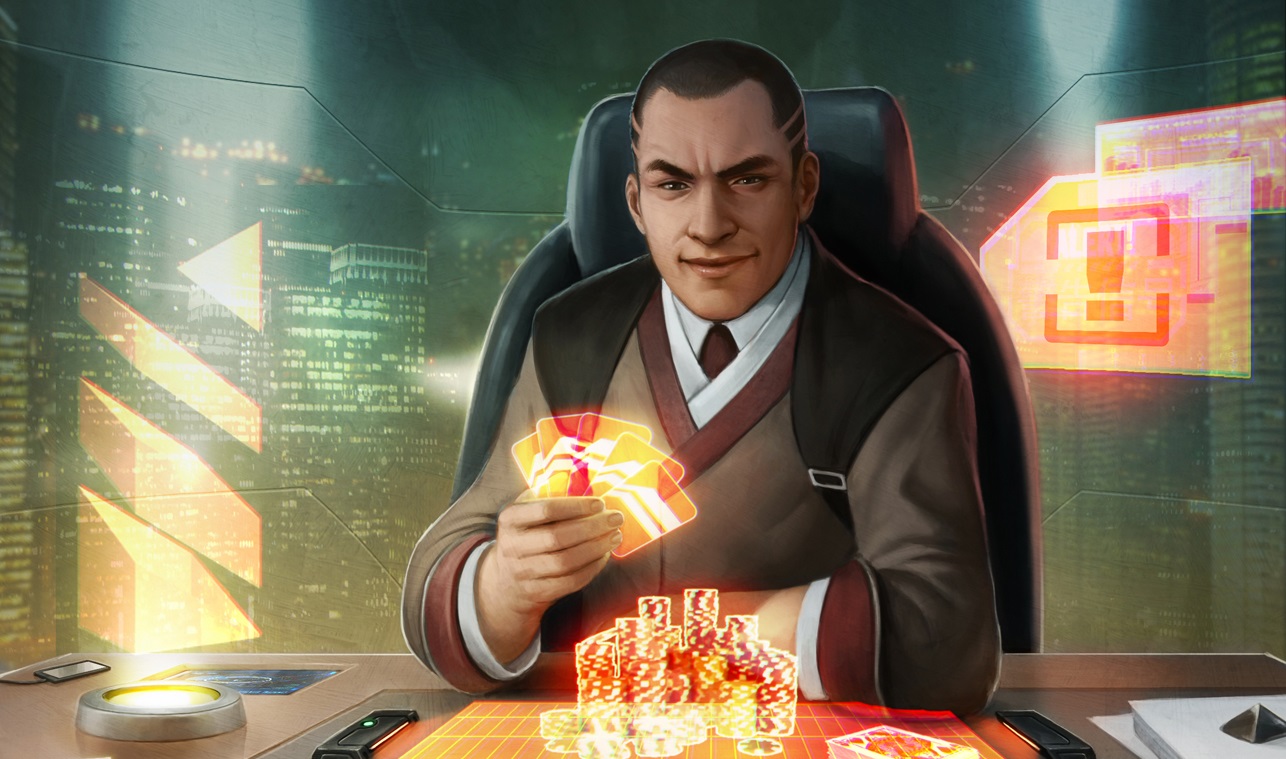
However, you have an opponent in front of you. They have their own plan, and this will affect how you need to play. You need to evaluate what you know about your opponent. Who has the stronger lategame? This will give you a hint if you should rush or if you should defend and try to bleed them dry. Who can put on the most pressure early, with agressive runner play or scoring dangerous agendas? This will let you know who is vulnerable to getting rolled over by tempo and lsoe before the long game even happens. Do they have the tools to disrupt your plan?
Sometimes these things will not be clear to you, but this just means you take your best shot and evaluate after the match. The higher levels of competitive play you are at, the more important it is to adapt to your opponent. When learning the game this type of skill is inferior to getting the basics right, but when you both make very few efficiency or tactical mistakes the strategy might mean everything.
“Every battle is won before it is fought.” – Sun Tzu
I will now give you a handy guide that will help you along the way. The Strategy is set in the first turn of the game. Before spending your first click, go through these questions in your head. Try to answer them all.
- Who has the stronger lategame? – It might be you, or it might be them.
- What are their main threats? – What do you need to be wary of?
- How does your deck answer their threats? – Strategy? Tactic? Card? Bluff?
You know going into this what your game-plan and your power-moves are. These do not exist in a vacuum, but in relation to your opponent. Take conscious decisions on how you will approach the game from a strategic standpoint.
Now, you need to assume a lot of things. This is especially true in a tournament-setting when their decklist might be hidden from you. This is where knowledge of the meta becomes really valuable. This simply means which decks are commonly played and that you are likely to face. However, Netrunner is a game of curveballs and tricks. That fiddling, durdling Shaper-player may be packing Apocalypse. Stay on your toes.
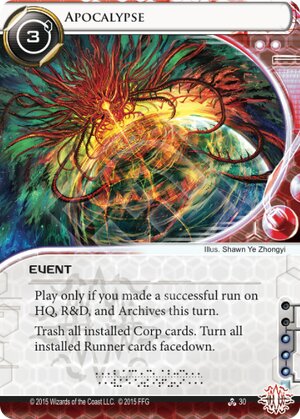
Respect their threats.
This leads you to the important question:
- What is my best chance of winning this?
Note that i did write best chance. Netrunner is a game of variance, you need to play the odds. Identify your best path to victory, and try to stick to it. Sticking to the plan will ensure you stay focused. When it comes to strategy, all your moves should build towards it. Your actions will compound on each-other and lead to tempo advantage or other advantages you can use to execute your plan.
What separates players in skill along the axis of strategy is that the skilled player is always aware of what their best way out is, and the unskilled player simply plays turn-by-turn. Remember your outs.
The Cost of Indecision
Since strategy is the path to victory it necessarily needs to be flexible if the situation changes. However, the most powerful strategy is usually achieved by committing to it. An example of this is economy-denial. If you try to win by denying your opponent a specific type of resource this strategy gets more powerful the fewer of this resource they have. Thus, if you switch strategy you will quickly lose the advantage you gained in the first place and reduced your future possibility to deny them this resource.
This aspect of a strategy means that there can be a significant cost to switching strategies, since you have just spent all your resources on trashing their campaigns, Diversing their Funds and whatnot you are likely worse off to perform a separate strategy (R&D lock for example). Thus a skilled player only switches strategy when absolutely necessary.
Example 2 – Playing Glacier Corp versus late-game runners
You are playing a normal ICE & agendas deck versus a runner that you know want to build their board-state until they have all solutions and lots of credits and then take you out. The weakness of these decks are that they take a lot of time and money to get to that state. Typical examples of this is a lot of Shapers or Sunny. In some degree most runners function like this, but to a lesser extent.
So what to do? You usually win late-game, but these specific decks are more powerful than you late. You need to adapt.
Their weakness is the time they need to set up. They naturally need to put themselves at a tempo disadvantage during this time. This is your window to get enough of an advantage to roll towards a win. You need to pressure them to choose to play sub-optimally, sacrificing setup or simply achieving too much of a lead so that they never get to their ‘invincible’ stage.
What is a Strategy?
Netrunner is usually won by scoring or stealing agendas. Newsflash, yes I know. Interestingly there are relatively few cards in every deck that directly help you with this. Most of a deck is economy and tools for the ICE/breaker-dynamic.
Your strategy (and deck) needs a win-condition. This usually centers around a certain pattern of play, combined with a few very specific cards. Once a player knows these cards it starts becoming easy to identify what your opponent is up to.
Corp-Side Strategy
Let’s look at some examples on the Corp-side. Usually, not not always, the Corp-side determines the appropriate strategy in Netrunner. The Corp is asking questions, the Runner responds.
There are several archetypes of decks in Netrunner, but not all that many. They all revolve around linchpin cards that they need to function. Once you can identify what your opponent is trying to do you can try to prevent it, or plan around it.
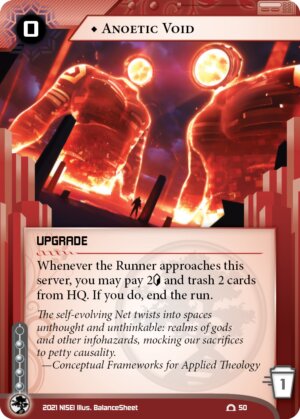
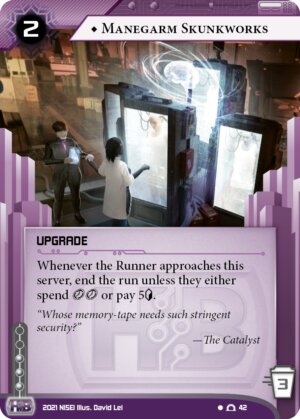
The ‘Glacier’ strategy relies on building a powerful board-state, and then scoring out powerful agendas with it. A key component in this strategy is defensive upgrades. Coupled with a powerful remote, big ICE and agendas that offer benefits this archetype is set up for lategame.
Countering this strategy revolves around denying the Corp this powerful boardstate if possible, or dismantling it. If all else fails the backup-strategy is often to R&D-lock them, as they have difficulty defending two servers with expensive ICE and upgrades.
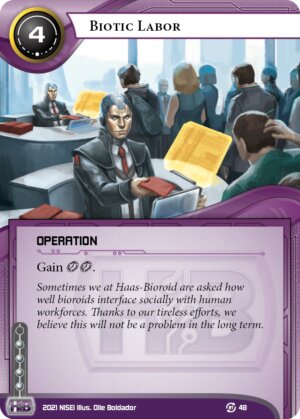
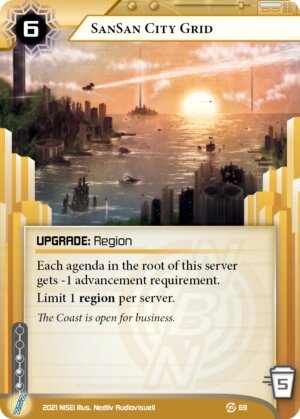
The ‘Fast-advance’ strategy relies on sacrificing tempo to score agendas without a powerful board-state. Key tools in this add one or two extra clicks per turn. Usually defending HQ and gathering money and tools they can blaze out unless the runner is careful.
Countering this strategy means stealing the agendas before the Corp can score them, with HQ-pressure or from R&D. It can also mean disrupting or destroying their fast-advance tools.
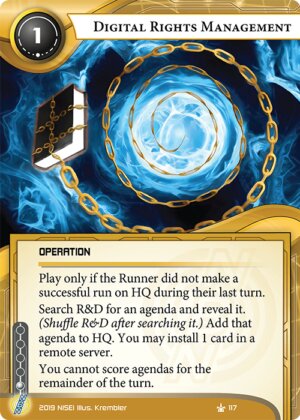
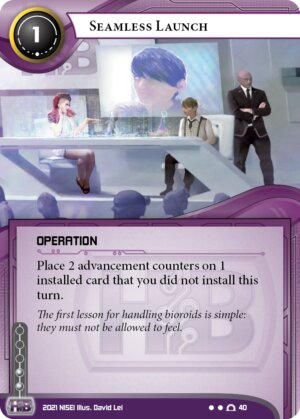
The ‘Never-advance’ archetype relies on taxing the runner by installing agendas, traps and assets blank and threatening a score. Since it is very difficult to spot the agenda this way the runner is faced with a lot of bad options.
Countering this strategy can revolve around making runs on the remote cheap enough to check most things, or using a mix of HQ and R&D pressure to keep them from comfortably focusing on the bluffing-game. Making correct Yomi reads is more important than for the previous two archetypes.
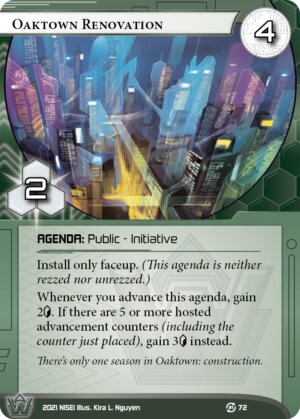
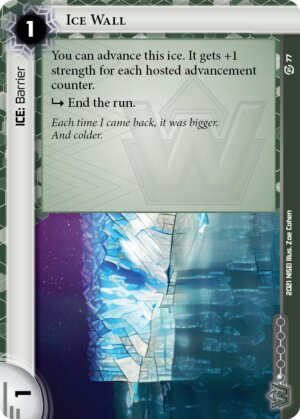
Ah.. the ‘Rush’ decks. A classic archetype. The strategy relies on ICE as a main win-condition, differing from all other archetypes. These decks aim tax the runner on clicks and win as fast as humanly possible.They need cheap gear-check ICE and good economy, and want to compress as much as possible into as few clicks as possible.
To counter this you need a fast runner-deck that can keep up. You also need to find your breakers very quickly. This often means you will have to make tough choices between efficiency and tactics, more than any other matchup.
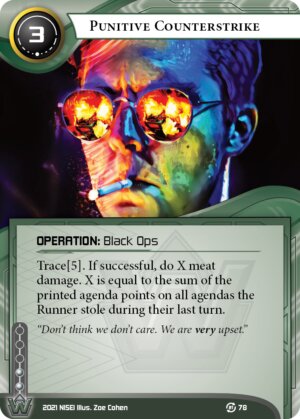
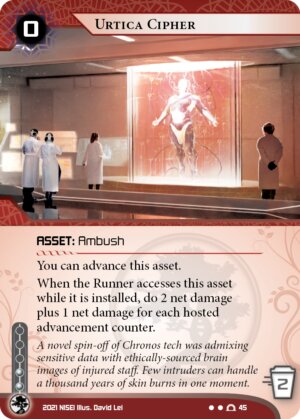
Finally, the ‘Kill’ decks. They come in many forms. Commonly Weyland and Jinteki they have a hard time actually winning by scoring agendas, and instead try to lure the Runner into a vulnerable situation or a trap. Recognizing the threat is critical, before it is too late.
Countering this strategy requires knowing the threat so that you can play around it. They have a plan to kill you in very specific ways, and you will need to tip-toe around that while interacting with them.
The decks you will play against will most likely fall into one or several of these categories, and you will know as soon as you spot the key cards in it. Remember the win-conditions, plan accordingly.
Runner-Side Strategy
On the runner side of things this is slightly less complex. Most runner-decks revolve around the core mechanics of running and accessing servers. While they differ in economy-package and tools they usually have a built in preference for winning by accessing certain servers. The runner win-condition usually (but not always) revolve around multi-accessing cards from R&D or HQ, or powerfully locking down a scoring-remote.
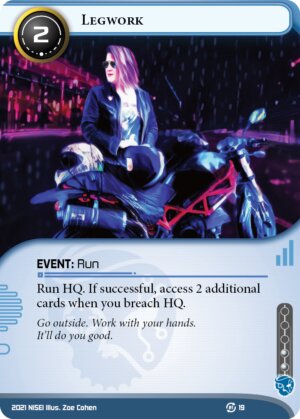
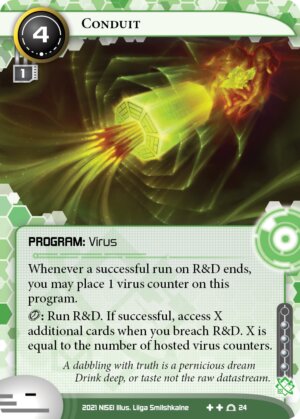
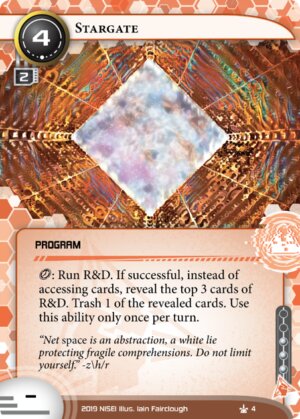
In general you will respond to the Corp a lot as the runner, so it is imperative you know what they intend to do. You first line of play is usually to prevent that, while setting up and growing your own board-state. Late-game you usually have an advantage.
If your deck has weaknesses that you are unable to compensate for with good play there are tools to use. While most of your deck will be breakers and economy, and a lot of it will be multi-access you can choose to slot tools as well.
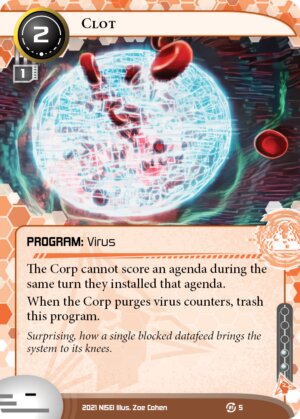
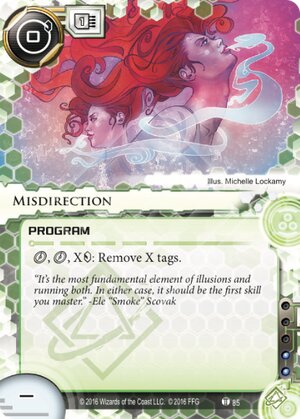
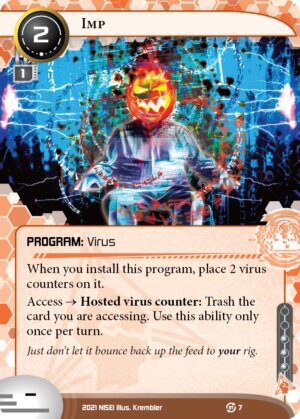
These cards directly interfere with the Corp’s plans, usually in a more powerful way than what you can accomplish using economy and breakers. If you are unable to stifle the Corp while you build towards your end-goal you may need to consider slotting specific counter-cards to boost your ability to interact with the Corp, or defend against certain threats.
A good deck does not use tools for everything, and they are no replacement for good play. Sometimes though, they are the right call.
Adapting Your Strategy
Well done. You are on your way to becoming a master strategist. Careful though, things may change suddenly and you will have to adapt. It may be because what you initially thought was a glacier-deck is packing Snare!, or it may be because you never seem to draw your important combo-piece and time is running out.
“No plan survives contact with the enemy.” – Erwin Rommel
What to do? You need to get creative. The first thing to do is to go through the list of questions i gave you at the start again. Are the answers still the same? Most importantly, is your route to victory still the same?
You know have something you did not at the start of the game. You have a lot of information.
Does the remote with the (probably) agenda in it look impenetrable? Do you feel victory slipping through your hands? Maybe you should realize that they have drawn 20 cards, making the average agenda-points in play 20×0,4=8. Run HQ!
Does the runner carefully avoid all your tripwires and well-laid deathtraps? Are they locked in on R&D? Maybe you need to sneak out an agenda among the traps to keep them honest..
Whether your strategy holds firm or not you should always think about where the game is going. If things continue along this path, will you or the opponent be in a leading position?
When to Take Risks
We will get deep into this topic in a future article on Yomi, but that is a whole ‘nother type of risk-taking that relies on psychology and reading your opponent. When talking about strategy it is important to recognize that sometimes your best option will be to roll the dice. After all, the best odds you will ever get playing roulette is to bet the maximum amount. Once. On red.

I was kidding about betting red of course. I meant black.
This is because small odds in your opponents favor compound. If your chance of succeeding with every move is 49%, theirs 51% and you feel tempo slipping away from you, making further moves will only increase their lead. In these situation you want to find a chance to bet big so that your 45% does not become 40% or 30%.
If you have no winning strategy left, recognize when it is time to go out in a blaze of glory!
Final Words
Wow. That was a mouthful. It was some time since i did this. This article is a piece in a series on Netrunner and what it takes to grow as an intermediate player, and also as a reflection on the depth of the game itself.
We have had lots of new players in the last month, and I suspect a lot of you will appreciate some perspective. We’ll see, if there is a response this dormant project may move towards completion.
Until next time.




